Establishment of transgenic lines to monitor and manipulate Yap/Taz-Tead activity in zebrafish reveals both evolutionarily conserved and divergent functions of the Hippo pathway
- PMID: 24560909
- PMCID: PMC4138299
- DOI: 10.1016/j.mod.2014.02.003
Establishment of transgenic lines to monitor and manipulate Yap/Taz-Tead activity in zebrafish reveals both evolutionarily conserved and divergent functions of the Hippo pathway
Abstract
To investigate the role of Hippo pathway signaling during vertebrate development transgenic zebrafish lines were generated and validated to dynamically monitor and manipulate Yap/Taz-Tead activity. Spatial and temporal analysis of Yap/Taz-Tead activity suggested the importance of Hippo signaling during cardiac precursor migration and other developmental processes. When the transcriptional co-activators, Yap and Taz were restricted from interacting with DNA-binding Tead transcription factors through expression of a dominant negative transgene, cardiac precursors failed to migrate completely to the midline resulting in strong cardia bifida. Yap/Taz-Tead activity reporters also allowed us to investigate upstream and downstream factors known to regulate Hippo signaling output in Drosophila. While Crumbs mutations in Drosophila eye disc epithelia increase nuclear translocation and activity of Yorkie (the fly homolog of Yap/Taz), zebrafish crb2a mutants lacked nuclear Yap positive cells and down-regulated Yap/Taz-Tead activity reporters in the eye epithelia, despite the loss of apical-basal cell polarity in those cells. However, as an example of evolutionary conservation, the Tondu-domain containing protein Vestigial-like 4b (Vgll4b) was found to down-regulate endogenous Yap/Taz-Tead activity in the retinal pigment epithelium, similar to Drosophila Tgi in imaginal discs. In conclusion, the Yap/Taz-Tead activity reporters revealed the dynamics of Yap/Taz-Tead signaling and novel insights into Hippo pathway regulation for vertebrates. These studies highlight the utility of this transgenic tool-suite for ongoing analysis into the mechanisms of Hippo pathway regulation and the consequences of signaling output.
Keywords: Eye development; Fluorescent reporter; Heart development; Hippo signaling; In vivo imaging.
Copyright © 2014 The Authors. Published by Elsevier Ireland Ltd.. All rights reserved.
Figures
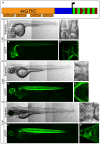

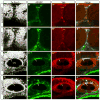
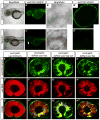
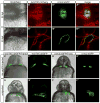
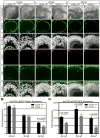
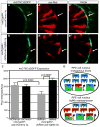
Similar articles
-
Yap and Taz regulate retinal pigment epithelial cell fate.Development. 2015 Sep 1;142(17):3021-32. doi: 10.1242/dev.119008. Epub 2015 Jul 24. Development. 2015. PMID: 26209646 Free PMC article.
-
Zebrafish mutants and TEAD reporters reveal essential functions for Yap and Taz in posterior cardinal vein development.Sci Rep. 2018 Jul 5;8(1):10189. doi: 10.1038/s41598-018-27657-x. Sci Rep. 2018. PMID: 29976931 Free PMC article.
-
Yap/Taz-TEAD activity links mechanical cues to progenitor cell behavior during zebrafish hindbrain segmentation.Development. 2019 Jul 22;146(14):dev176735. doi: 10.1242/dev.176735. Development. 2019. PMID: 31273051
-
Hippo-Yap/Taz signaling: Complex network interactions and impact in epithelial cell behavior.Wiley Interdiscip Rev Dev Biol. 2020 May;9(3):e371. doi: 10.1002/wdev.371. Epub 2019 Dec 11. Wiley Interdiscip Rev Dev Biol. 2020. PMID: 31828974 Free PMC article. Review.
-
Reciprocal regulation of YAP/TAZ by the Hippo pathway and the Small GTPase pathway.Small GTPases. 2020 Jul;11(4):280-288. doi: 10.1080/21541248.2018.1435986. Epub 2018 Apr 20. Small GTPases. 2020. PMID: 29457552 Free PMC article. Review.
Cited by
-
The hippo pathway in heart development, regeneration, and diseases.Circ Res. 2015 Apr 10;116(8):1431-47. doi: 10.1161/CIRCRESAHA.116.303311. Circ Res. 2015. PMID: 25858067 Free PMC article. Review.
-
Dynamic Tissue Rearrangements during Vertebrate Eye Morphogenesis: Insights from Fish Models.J Dev Biol. 2018 Feb 28;6(1):4. doi: 10.3390/jdb6010004. J Dev Biol. 2018. PMID: 29615553 Free PMC article. Review.
-
Hippo-yap signaling in ocular development and disease.Dev Dyn. 2018 Jun;247(6):794-806. doi: 10.1002/dvdy.24628. Epub 2018 Apr 23. Dev Dyn. 2018. PMID: 29532607 Free PMC article. Review.
-
Protein interaction switches coordinate Raf-1 and MST2/Hippo signalling.Nat Cell Biol. 2014 Jul;16(7):673-84. doi: 10.1038/ncb2986. Epub 2014 Jun 15. Nat Cell Biol. 2014. PMID: 24929361
-
Mechanisms of Cardiac Regeneration.Dev Cell. 2016 Feb 22;36(4):362-74. doi: 10.1016/j.devcel.2016.01.018. Dev Cell. 2016. PMID: 26906733 Free PMC article. Review.
References
-
- Davidson I, Xiao JH, Rosales R, Staub A, Chambon P. The HeLa cell protein TEF-1 binds specifically and cooperatively to two SV40 enhancer motifs of unrelated sequence. Cell. 1988;54:931–42. - PubMed
Publication types
MeSH terms
Substances
Grants and funding
LinkOut - more resources
Full Text Sources
Other Literature Sources
Molecular Biology Databases

